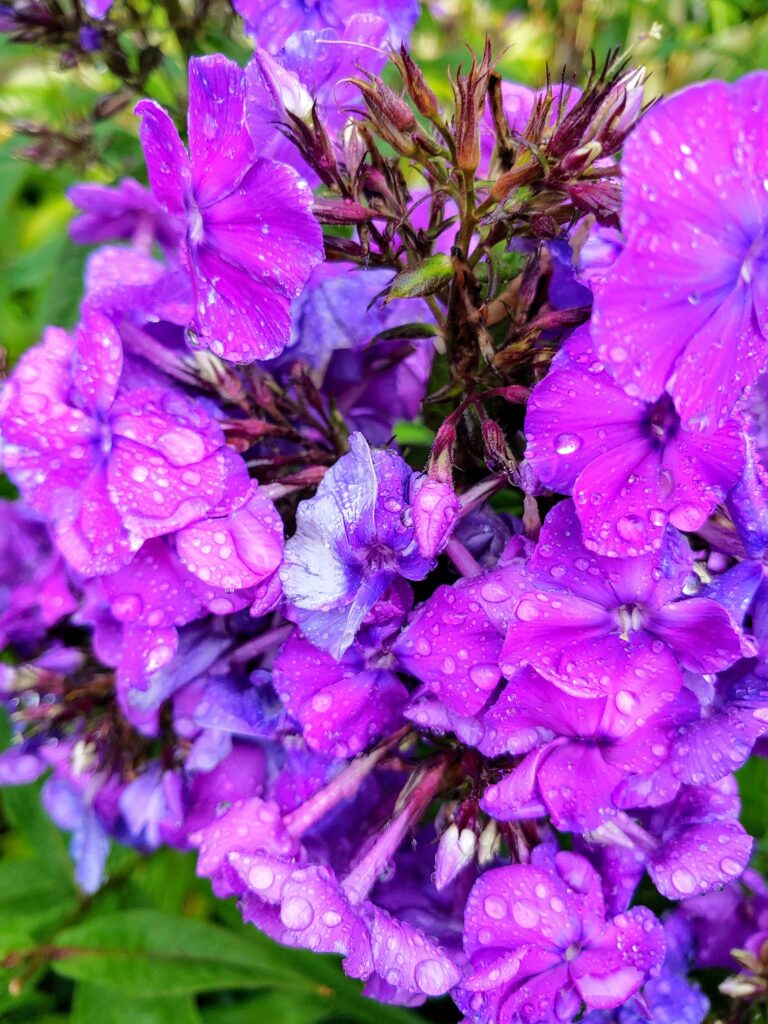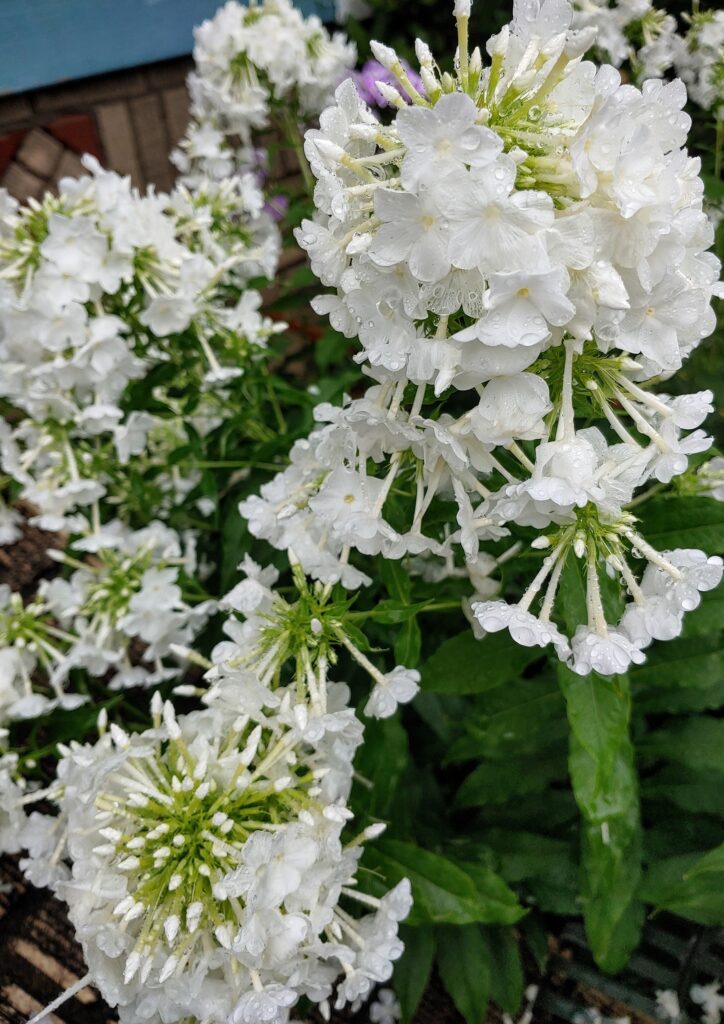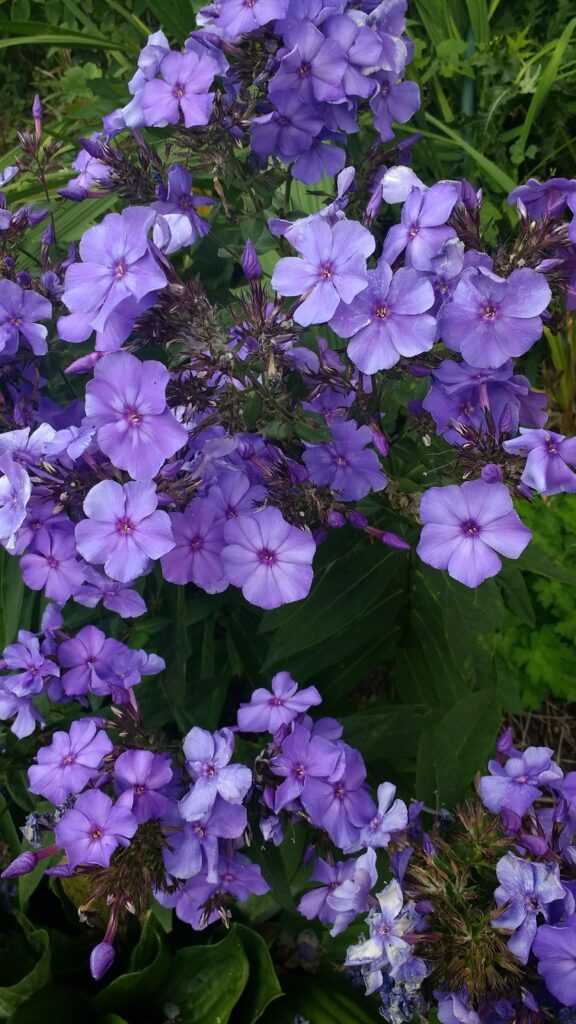by Elsa Johnson
I asked our writers/editorial staff to choose a plant they like and write about it. So here is Lois Rose (our Master Gardener) on Abies koreana ‘Horstmann’s Silberlocke’, a lovely silvery evergreen tree, and her Ohio citrus, hardy orange. Lois is followed by Ann McCulloh (once upon a time with the Botanical Garden before its merger but long since moved on), who writes radiantly about Oenothera biennis. Next is our permaculture expert Tom Gibson’s take on little-known gem Indian Pink. I thought I knew what plant I wanted to write about, but then found (sorry!) I couldn’t choose just one. So – here we go:
Lois Rose on Silberlocke Fir:
Silberlocke fir, Abies koreana, is a truly wonderful plant discovered in Germany by Gunter Horstmann. It is a very slow growing conifer, 3”-6” a year, eventually getting to 15 feet. It has fantastic curved upright needles with white undersides. When it is good and ready, it might produce upright cones near the top. I loved it at first sight, and have watched it grow in full sun, very slowly. It is visible from a distance, with its striking undersides and I am honored to have it in my garden.
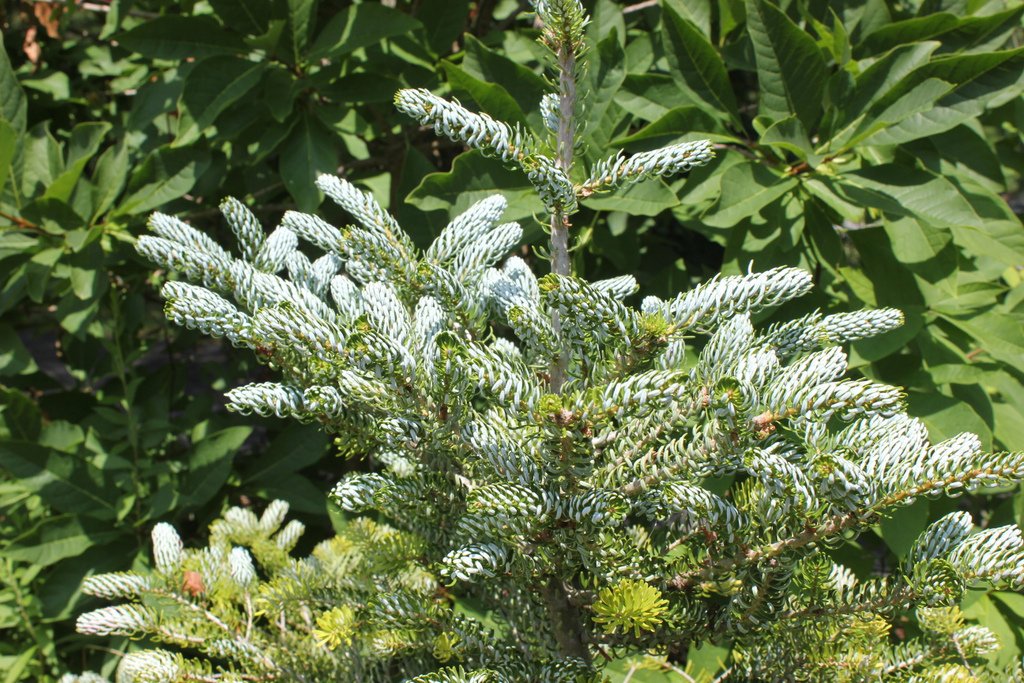
Lois Rose on Hardy Orange:
This unusual shrub is Poncirus trifoliata, hardy orange, which I have been growing for over a decade. It produces little round oranges, fuzzy at this stage but then less so as they ripen in the fall. They are bitter beyond imagining as they come off of the tree. No, even bitterer than that. And they are filled with seeds, little pulp, little juice. But there are advantages. In England they are used as hedges because no self respecting animal would try to cross through the half inch thorns that are everywhere on the bush. The root stock, being hardy, is used in Florida and other growing areas for more normal oranges because it will not die during a hard freeze. My oranges are now taller than I am and have grown to make a mini-hedge about five or six feet wide. Processing them takes some effort, yes. For example, you place them in the microwave in boiling water, then change it out six or seven times to erase some of the bitterness. One of the recipes calls for doing the boiling seven times, then adding a ton of sugar, and then–putting the resulting marmalade as far back in your cabinet as possible and forgetting about it. I have solved some of this problem by making the recipe with half Poncirus and half normal sweet oranges. Nothing bothers these plants–not disease nor insect nor critter. Dare you to try one.
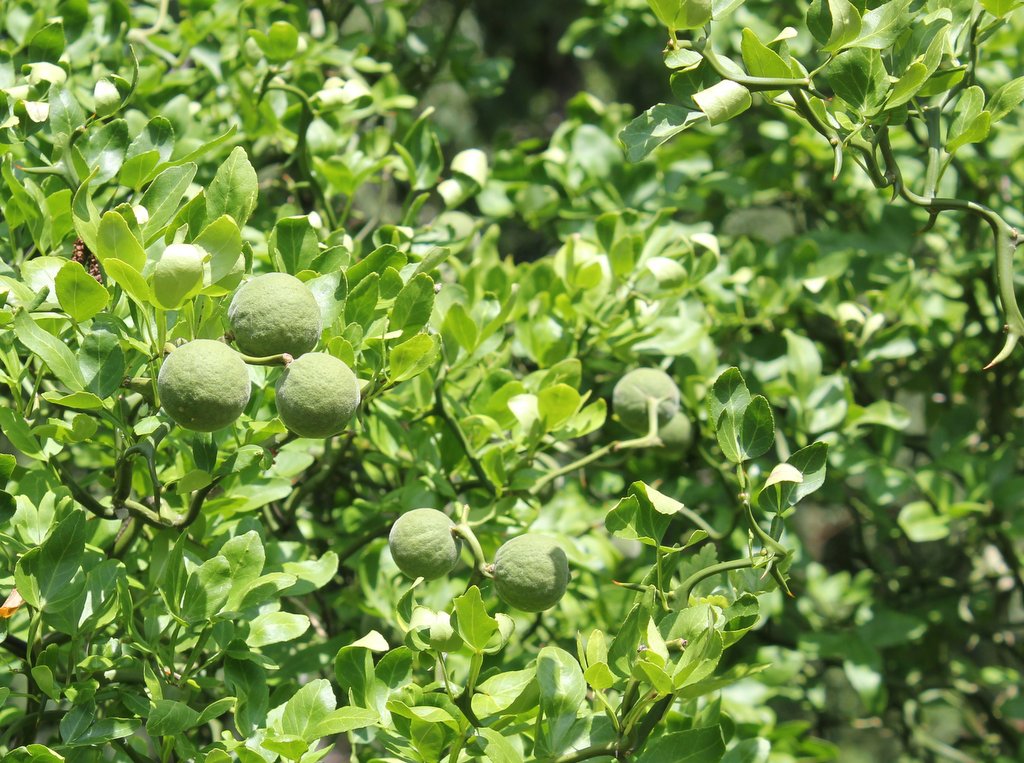
Ann McCulloh on Common Evening Primrose:
Silky soft yellow flowers open in the late afternoon at the crumbling edge of my driveway. Nobody planted this 3’ tall plant, but I’m notorious for letting weeds grow, at least until I know them better.
I recognize it as a species of Evening Primrose, but the ones I was most familiar with have smaller flowers. (Oenothera cruciata) Hoping to discover that this one, too, was a native species, I first pulled out my well-thumbed copies of Newcomb’s Wildflower Guide and Peterson’s Guide to Wildflowers. I confirmed that this was most likely the Common Evening Primrose ( Why didn’t I already know this???) Apparently there’s a lot of genetic variation in Evening Primrose, enough so that they’ve been the subject of much study.
On to Google to learn whether this charming plant would be a good addition to my pollinator gardens.

Hooray! Thanks to North Carolina State Extension I learned that Oenothera biennis is a biennial plant widely native in North America. It supplies nectar and pollen to some cool nocturnal hawk moths and native bees, birds eat the seeds and it’s a host plant for the primrose moth and the white-lined Sphinx moth. It readily grows in many types of soil, and is quite drought tolerant. It can seed prolifically, but I prefer that to plants that require babying.
I will be collecting seeds and scattering some this fall and others in spring. I’m delighted to find another showy native summer flower for my wildlife buffet!
Tom Gibson on Indian Pink:
My favorite plant is one I have never seen outside my own yard! It’s Spigelia marilandica, or “Indian Pink,” and it arrived by accident from a Kentucky native plant nursery. (At least I don’t remember ordering it.) My Indian Pink loves a wet, shady area of my native plant garden and produces long-lasting red and yellow bicolor blossoms in June. Whenever I see it and its unusual shape, I’m surprised it isn’t a standard in more conventional gardens. Isn’t one of the most commonly asked questions of garden columnists: “What can I plant in wet shade?”
Part of the reason may be that it has not grown natively much or at all in Ohio. Map. It is officially a plant of the American southeast—including such nearby states as Indiana and Kentucky. Yet with climate change and Northheast Ohio’s ever warming weather it seems like the perfect plant to anticipate our future. It’s been trouble-free for me and even attracts hummingbirds.

Elsa Johnson on Phlox divaricata:
I love our native Phlox divaricata, the fragile, delicate woodland phlox that blooms in open moist woodlands in spring, and because I’m partial to blue, I especially like ‘Blue Moon’. The front third of my front yard has three small multi-trunked serviceberry ‘trees’ (tree being a misnomer) close to the sidewalk, and under them grow ferns, soft grassy carex pennsylanica, oenothera speciosa (more on that in a moment), Solomon seal, and Phlox divaricata ‘Blue Moon’, which grows here and there in small clumps. The plants and flowers look like a strong wind would dissolve them, but the flowers actually last several weeks. It’s taken a while to get established, I’ve had to nurse it along, but at long last seem to have gotten past that hurdle.
A little further away from the serviceberry ‘trees’ grow clumps of Oenothera speciosa, another in the evening primrose family, also a dainty looking plant, with small elongated leaves, and flowers the same shape as the yellow flowers on the Oenothera biennis mentioned by Ann, but in a lovely, lightly veined pale pink. Supposedly it is a robust spreader, though it has not been for me, but again, finally, seems to be getting happy. I am not fond of the red splashes that appear on the leaves as the summer wears on, but I’ve learned to live with that. If not fussed with, this plant reseeds, and sometimes re-blooms lightly in the early fall.
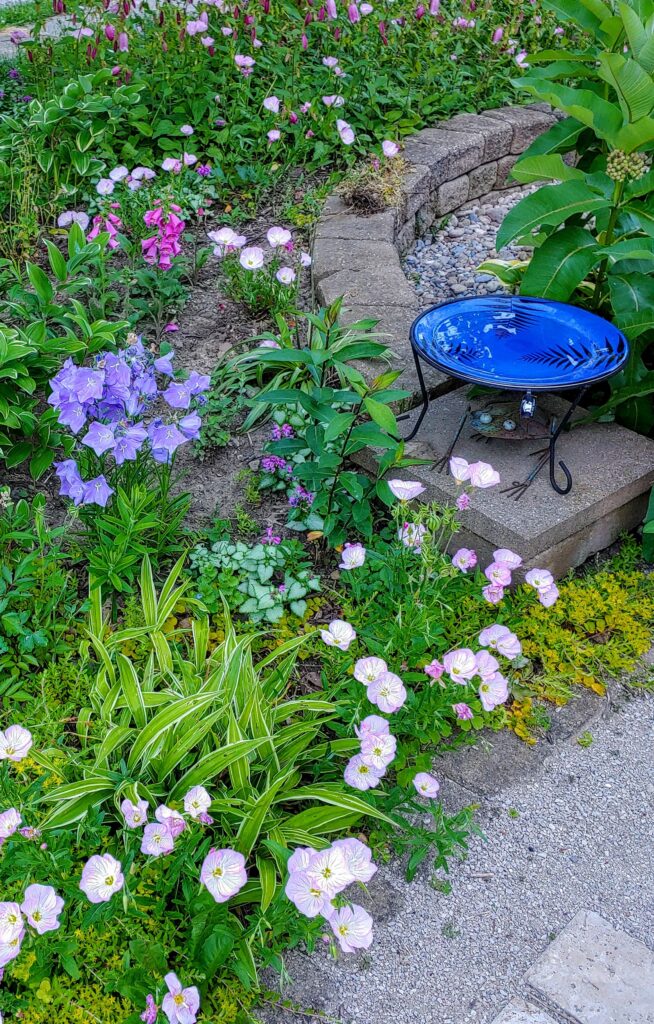
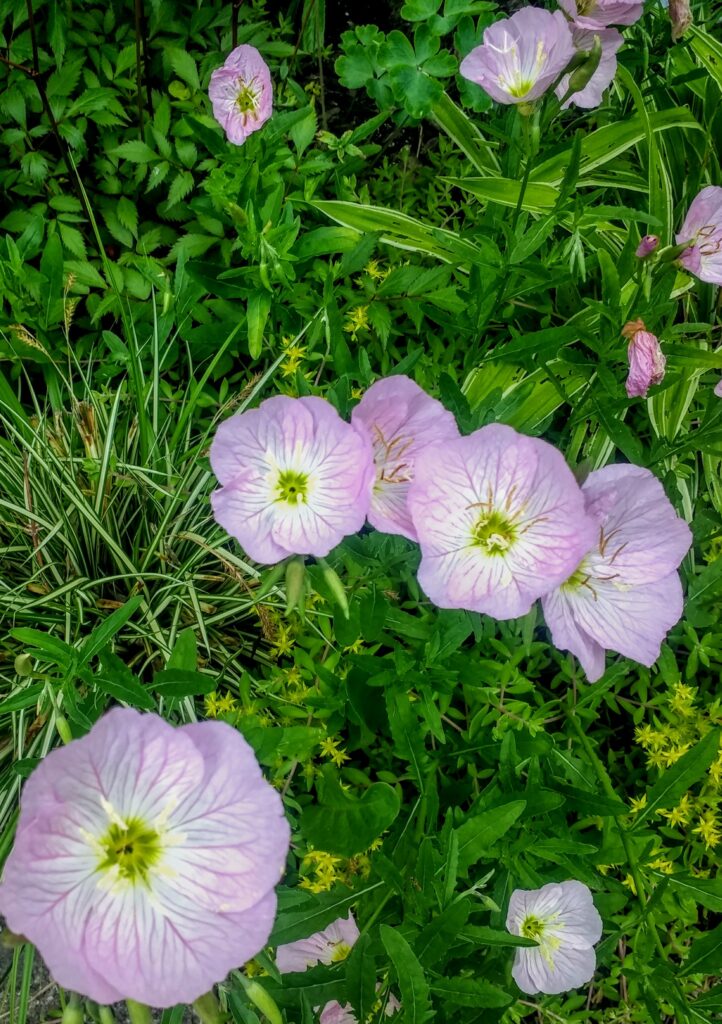

Elsa Johnson on Amsonia hubrichtii and Pycnanthemum muticum
There are two more natives I especially like. The first is Amsonia hubrichtii (native, not native to Ohio), for the soft cloud-like texture created by its thread-like leaves which turn marvelously gold in the fall. Plant en-mass for best effect, but be patient; this is another plant that at first is slow to develop.
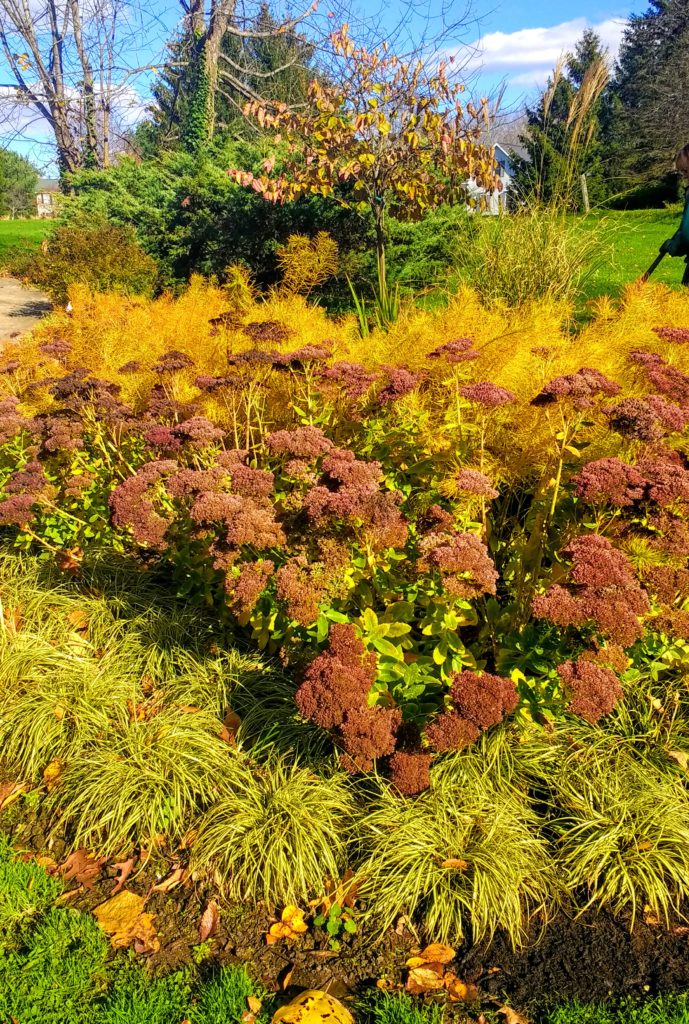
Then there is Pycnanthemum muticum, our native mint, which contributes a silvery tone to the garden. Although it is not aggressive like so many other non-native mints, be prepared for it to wander.
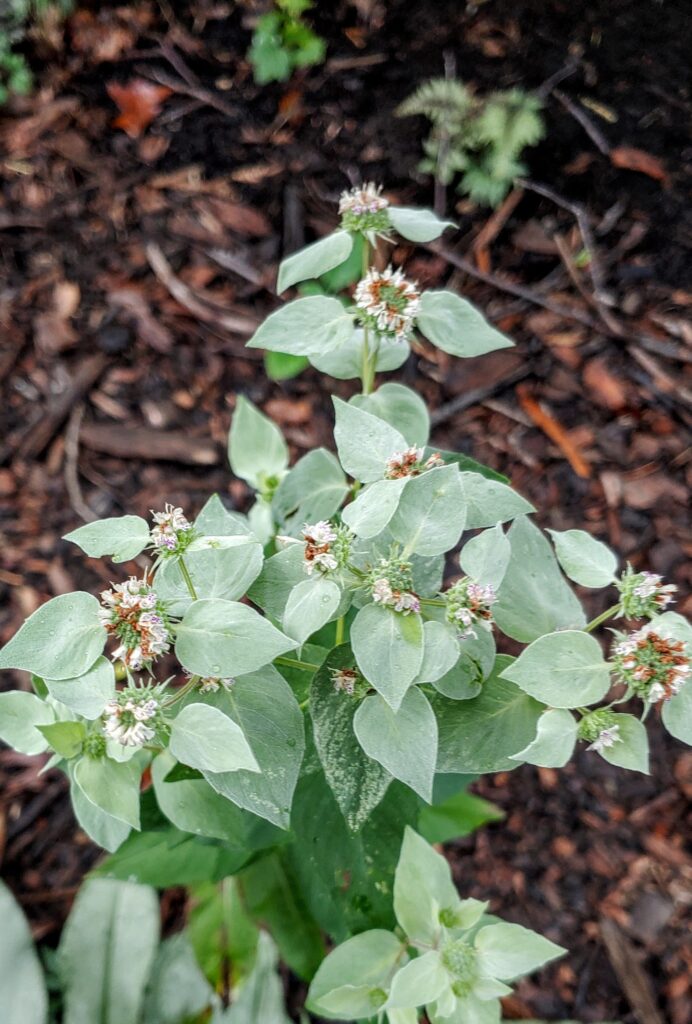
Pycnanthemum is a great pollinating insect attractor, which brings me to what I was originally going to write about, the non-native Oreganum laevigatum ‘Herrenhausen’. This small, low growing, robust (i.e. – spreading) oregano is a magnet to a multitude of small flying insects. When I say small I mean as in, if they were any smaller, I wouldn’t be able to see them. And also small bees – honeybees, and others even smaller. On a warm day this little patch is buzzing.
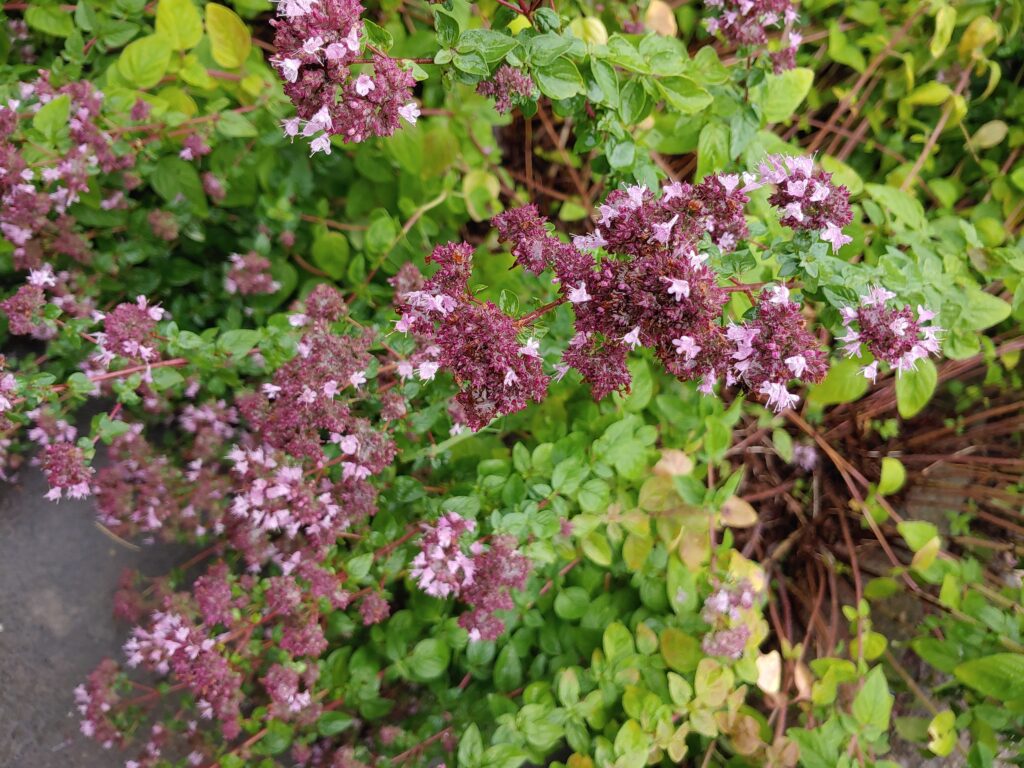
Which brings me back to native phlox, this time to Phlox paniculata, of which I have much, and at this time of year, in full bloom, it is much visited by big black-butt bumblebees (probably carpenter bees) and Monarch and Eastern Tiger Swallowtail butterflies.
